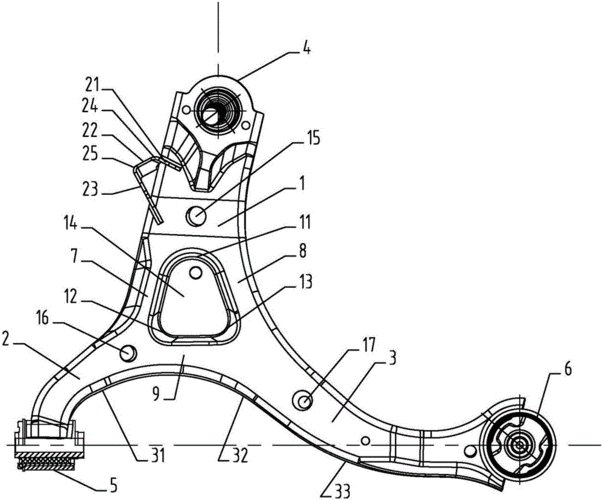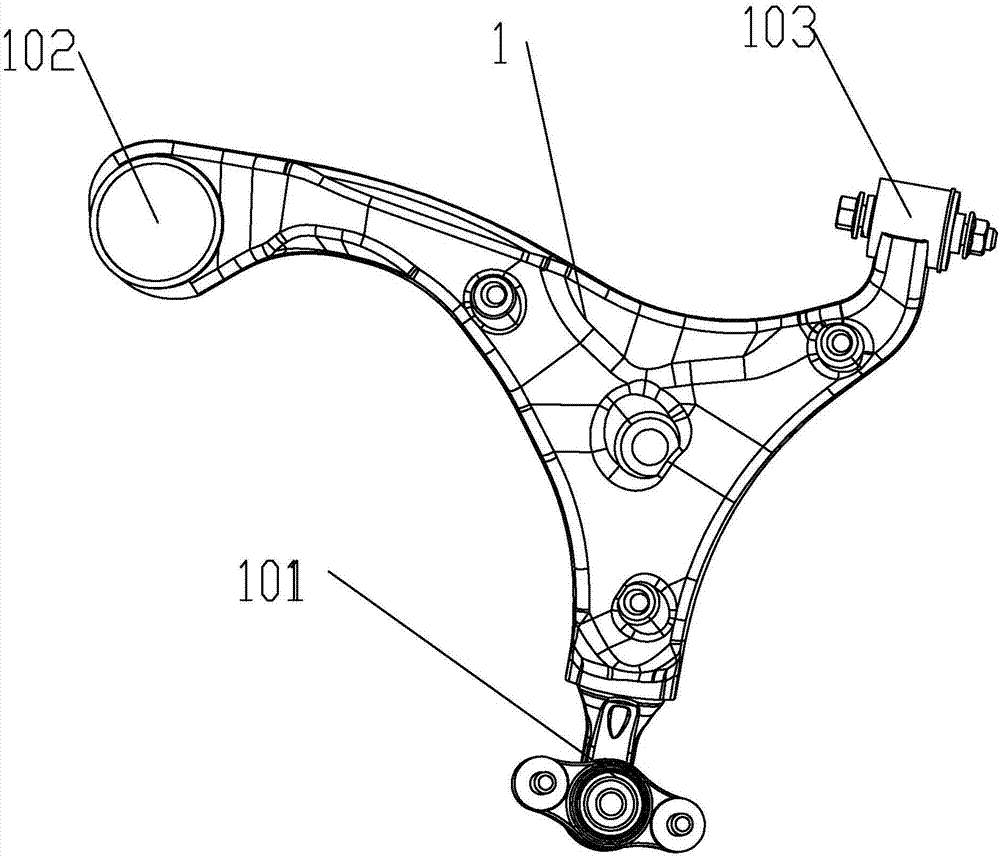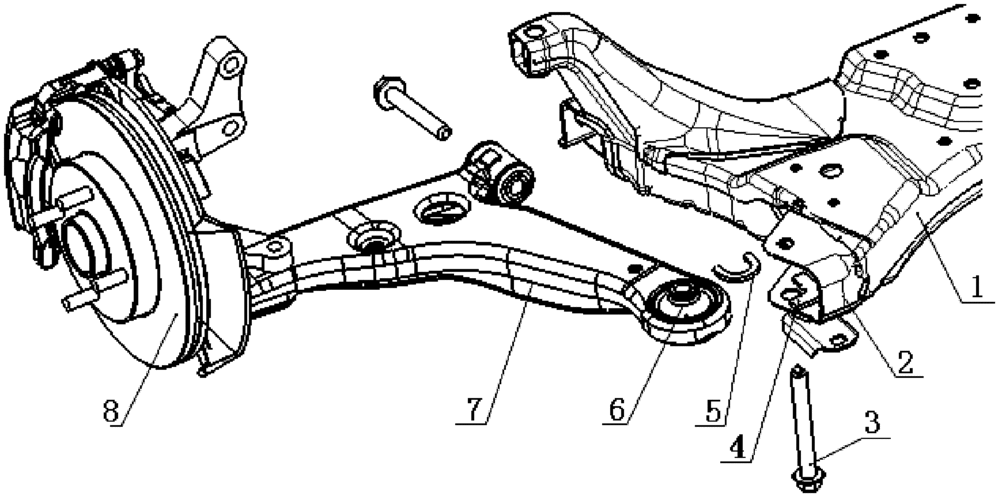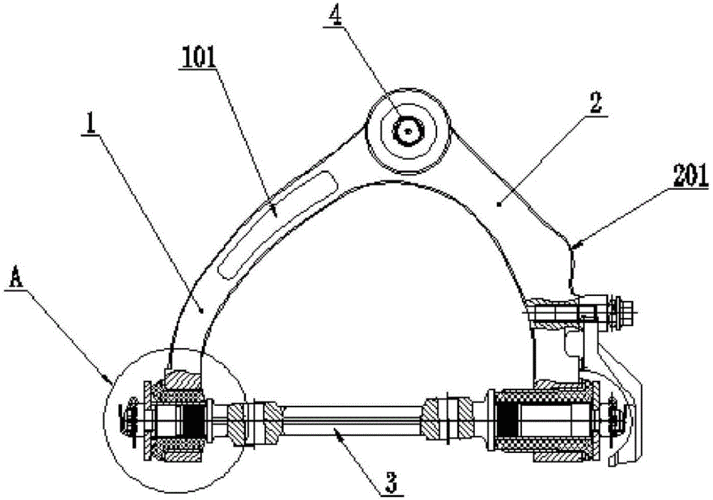Suspension is the general term for all force-transmitting connection devices between the frame and the axle or wheels. The vibration generated by this ensures the smooth running of the vehicle.

A typical suspension structure consists of elastic elements, guide mechanisms and shock absorbers, and some structures include bumpers and stabilizer bars. Elastic elements include leaf springs, air springs, coil springs and torsion bar springs, while modern car suspensions mainly use coil springs and torsion bar springs, while some advanced cars use air springs.
Suspension is an important assembly in the car, which elastically connects the frame and the wheel, and is related to the various performances of the car. From the outside, a car suspension is just a few rods, tubes and springs, but don't think it's that simple. On the contrary, automobile suspension is a kind of automobile assembly that is difficult to meet perfect requirements, because the suspension needs to meet the requirements of automobile comfort and handling stability, and these two aspects are opposite to each other. For example, in order to obtain good comfort, the vibration of the car needs to be cushioned to a large extent, so the spring should be designed to be soft, but if the spring is too soft, it will easily lead to "nodding" of braking, "heading up" of acceleration and severe side effects. The bad tendency of overturning is not conducive to the steering of the car, and it is easy to cause the car to run unstable.
Independent wheel suspension
The structural feature of non-independent suspension is that the wheels on both sides are connected by an integral frame, and the wheels and axles are suspended under the frame or car body through elastic suspensions. The non-independent suspension has the advantages of simple structure, low cost, high strength, convenient maintenance, and small changes in front wheel alignment during driving. However, due to its poor comfort and handling stability, it is basically no longer used in modern cars, but mainly used in trucks and buses.
Independent suspension
Independent suspension means that the wheels on both sides are independently suspended under the frame or body through elastic suspension. Its advantages are: light weight, reduce the impact on the body, and improve the adhesion of the wheel to the ground; the soft spring with small stiffness can be used to improve the comfort of the car; it can lower the engine position and center of gravity of the car, thereby improving the driving performance of the car Stability; the left and right wheels bounce independently, which can reduce the tilt and vibration of the body. However, the independent suspension has disadvantages such as complex structure, high cost, and inconvenient maintenance. Most modern cars use independent suspensions, which can be divided into wishbone, trailing arm, multi-link, candle and McPherson suspensions according to different structural forms.

Wishbone suspension
Cross-arm suspension refers to the independent suspension in which wheels swing in the transverse plane of the vehicle. It can be divided into double-arm suspension and single-arm suspension according to the number of cross-arms.
The structure of the single wishbone is simple, the center of roll is high, and the anti-roll ability is strong. However, as the speeds of modern cars increase, excessive roll centers can cause large changes in wheel trajectory and increased tire wear as the wheels bounce. In addition, when turning sharply, the vertical force transmission between the left and right wheels is too large, resulting in increased camber of the rear wheels. The yaw stiffness of the rear wheel is reduced, resulting in serious high-speed drift conditions. The single-wishbone independent suspension is mainly used for the rear suspension, but because it cannot meet the requirements of high-speed driving, it is rarely used at present. According to whether the length of the upper and lower wishbone is equal, the double wishbone independent suspension is divided into two types: equal length double wishbone and unequal length double wishbone. The suspension can keep the inclination angle of the kingpin constant, but the track width changes greatly (similar to the single wishbone type), which causes serious tire wear, so it is rarely used now. For double-wishbone suspensions of different lengths, as long as the length of the upper and lower wishbone is properly selected and optimized, through reasonable arrangement, the changes of track width and front wheel alignment parameters can be within an acceptable range, so as to ensure that the car is in good condition. driving stability. At present, the unequal-length double-wishbone suspension has been widely used in the front and rear suspensions of automobiles, and the rear wheels of some sports cars and racing cars also use this suspension structure.

Multi-link independent suspension
A multi-link suspension is a suspension consisting of (3-5) rods that control changes in the position of the wheels. The multi-link type can make the wheel swing around an axis at a certain angle with the longitudinal axis of the vehicle, which is a compromise between the cross-arm type and the longitudinal axis of the vehicle. Proper selection of the angle between the swing arm axis and the longitudinal axis of the automobile can obtain the advantages of the cross-arm suspension and the trailing-arm suspension to varying degrees, and can meet different performance requirements. The main advantage of the multi-link suspension is that the change in track width and toe-in is small when the wheel is bouncing, and it can turn smoothly according to the driver's intention whether the car is driving or braking. Its disadvantage is that the axle of the car swings at high speed.
Trailing arm suspension
Trailing arm independent suspension refers to the suspension structure in which the wheels swing in the longitudinal plane of the vehicle, and is divided into single trailing arm type and double trailing arm type. The caster angle of the kingpin changes a lot when the wheel is bouncing up and down, so no single trailing arm suspension is used at the wheel. The two swing arms of a double-trailing-arm suspension are usually made to be equal lengths to form a parallel four-bar structure so that the caster angle of the kingpin remains constant as the wheels bounce up and down. The double trailing arm suspension is mainly used for the steering wheel.
Candle hanging
The structural feature of the candle suspension is that the wheels move up and down along the axis of the kingpin rigidly fixed to the frame. The advantage of the candle-shaped suspension is that when the suspension is deformed, the positioning angle of the kingpin will not change, and only the track and the wheelbase will change slightly, so it is particularly beneficial to the steering and driving stability of the car. However, the candle suspension has a big disadvantage: the lateral force of the car will be borne by the kingpin sleeved on the kingpin sleeve, resulting in increased frictional resistance between the sleeve and the kingpin and serious wear. Candle hanging is not widely used nowadays.
McPherson Suspension
The wheel of the McPherson suspension is also a suspension that slides along the kingpin, but it is different from the candle suspension in that its kingpin can swing. MacPherson suspension is a combination of swing arm and candle suspension. Compared with the double-wishbone suspension, the advantages of the MacPherson suspension are: compact structure, little change in the alignment parameters of the front wheels when the wheels are bouncing, good handling stability, canceling the upper wishbone, and facilitating the layout of the engine and steering system ;Compared with candle suspension, the lateral force on its sliding column has been greatly improved. McPherson suspension is mainly used for the front suspension of small and medium-sized cars. The front suspensions of Porsche 911, domestic Audi, Santana, Xiali and Fukang are MacPherson independent suspensions. Although the McPherson suspension is not the most technical suspension structure, it is still a durable independent suspension with strong road adaptability.

Active suspension
Active suspension is a new computer-controlled suspension developed in the past ten years. It combines the technical knowledge of mechanics and electronics, and is a relatively complex high-tech device. For example, in Santilla, Citroen, France, where the active suspension is installed, the center of the suspension system is a microcomputer. Data such as amplitude and frequency, steering wheel angle and steering speed are transmitted to a microcomputer. The computer continuously receives this data and compares it with preset thresholds to select the appropriate pause state. At the same time, the microcomputer independently controls the actuators on each wheel, and produces twitching by controlling the change of oil pressure in the shock absorber, so that the suspension movement that meets the requirements can be generated on any wheel at any time. Therefore, the Santiya car is equipped with a variety of driving modes. As long as the driver pulls the "Normal" or "Sport" button on the auxiliary instrument panel, the car will automatically be set in the optimal suspension state for optimal comfort performance.
Active suspension has the function of controlling body movement. When the inertia of the car during braking or cornering causes the spring to deform, the active suspension will generate a force that opposes the inertial force, thereby reducing the change in body position. For example, in the German Mercedes-Benz 2000 CL sports car, when the car is turning, the suspension sensor will immediately detect the inclination and lateral acceleration of the car body. Based on the sensor information, the computer calculates against preset thresholds and immediately determines where to place the load on the suspension to minimize body lean.
Jinjiang Huibang Zhongtian Machinery Co., Ltd. was established in 1987. It is a modern comprehensive manufacturer integrating R&D, production and sales of various types of vehicle chassis parts. Strong technical force. In line with the tenet of "Quality First, Reputation First, Customer First", we will continue to advance towards the specialization of high, refined, professional and special products, and serve the vast number of domestic and foreign customers wholeheartedly!
Post time: Apr-23-2023